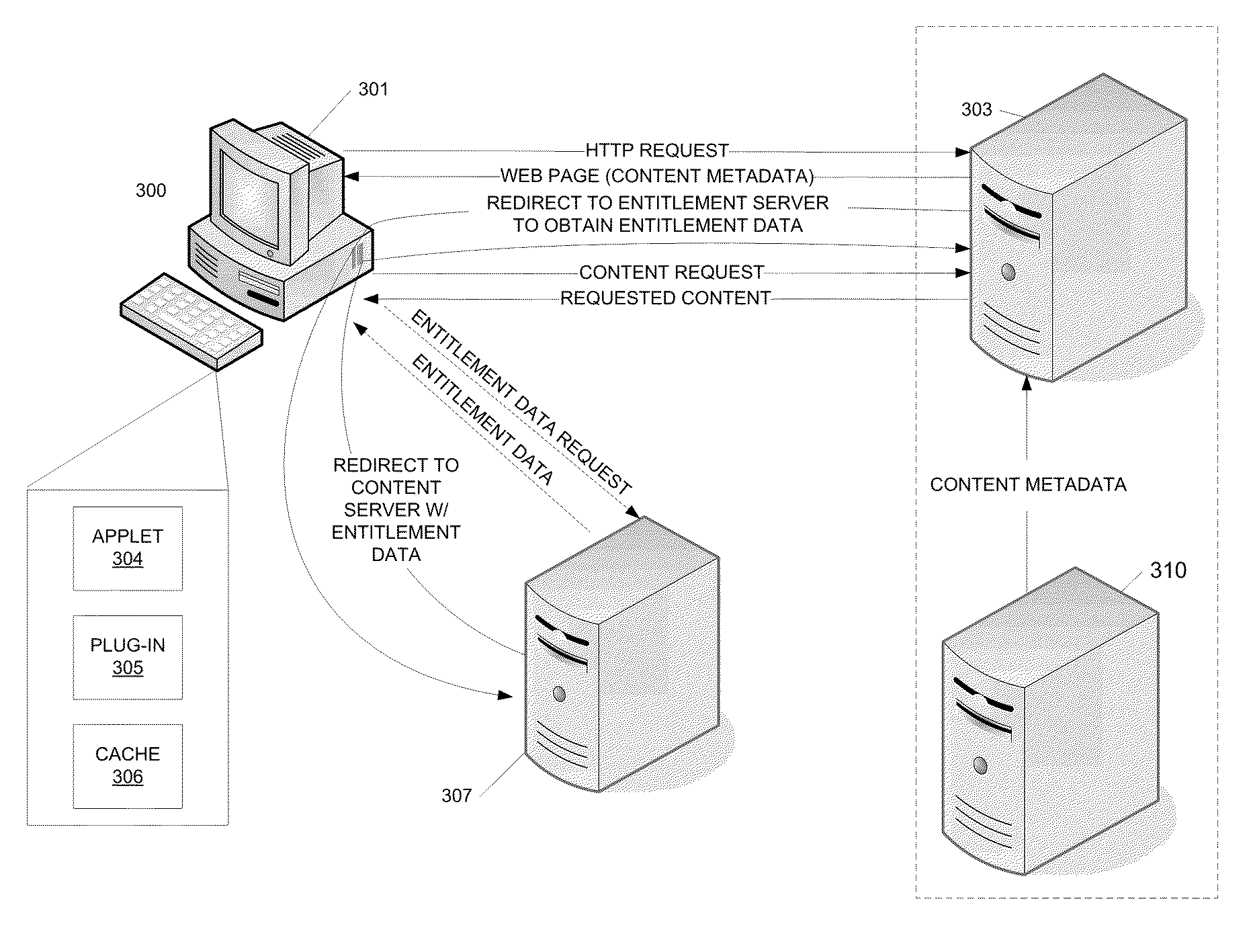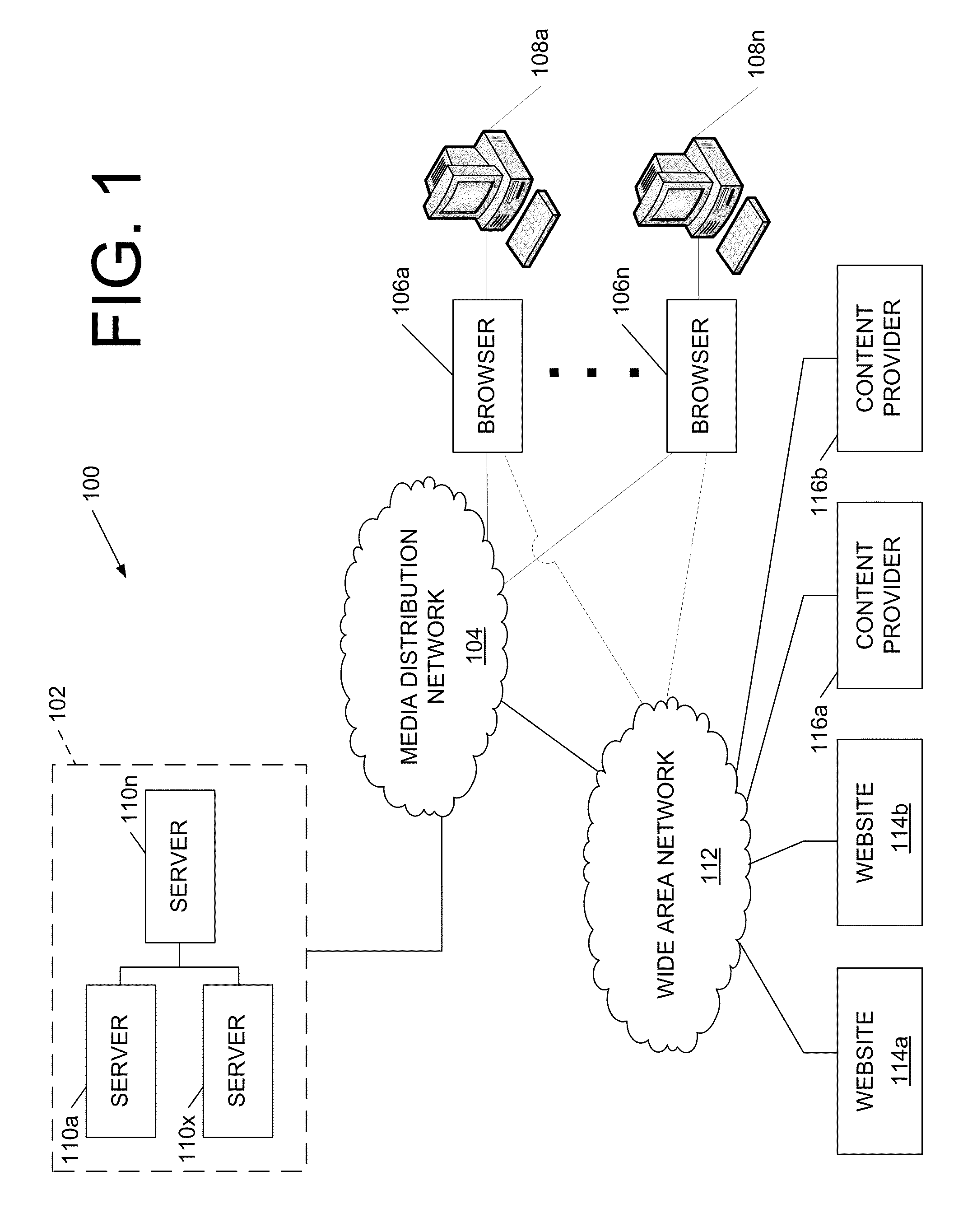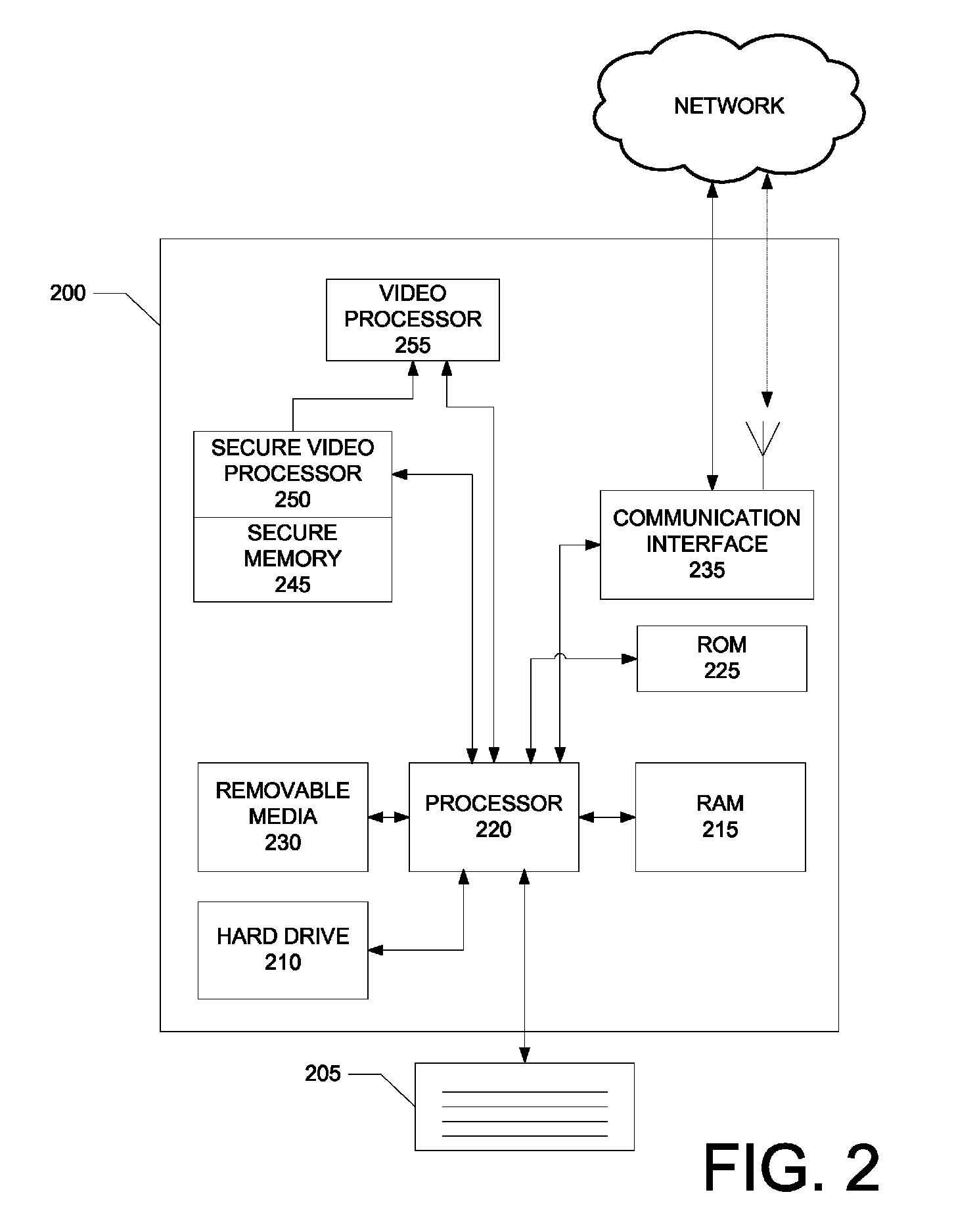Method for scalable access control decisions
a technology of access control and decision-making, applied in the field of methods, can solve the problems of increasing burden, requiring additional resources, and content servers may be overloaded with requests
- Summary
- Abstract
- Description
- Claims
- Application Information
AI Technical Summary
Benefits of technology
Problems solved by technology
Method used
Image
Examples
Embodiment Construction
[0023]In the following description of the various embodiments, reference is made to the accompanying drawings, which form a part hereof, and in which is shown by way of illustration various embodiments in which one or more aspects of the disclosure may be practiced. It is to be understood that other embodiments may be utilized and structural and functional modifications may be made without departing from the scope of the present disclosure.
[0024]FIG. 1 illustrates a content distribution system 100 that may be used in connection with one or more aspects described herein. The distribution system 100 may include a headend 102, a plurality of browsers 106 (e.g., browsers 106a-106n) contained on and utilized by a corresponding plurality of client devices 108 (e.g., client devices 108a-108n), and a media distribution network 104. The distribution system 100 may be used as a media service and content provider / client system wherein the provider (or vendor) generally operates the headend 102...
PUM
 Login to View More
Login to View More Abstract
Description
Claims
Application Information
 Login to View More
Login to View More - R&D
- Intellectual Property
- Life Sciences
- Materials
- Tech Scout
- Unparalleled Data Quality
- Higher Quality Content
- 60% Fewer Hallucinations
Browse by: Latest US Patents, China's latest patents, Technical Efficacy Thesaurus, Application Domain, Technology Topic, Popular Technical Reports.
© 2025 PatSnap. All rights reserved.Legal|Privacy policy|Modern Slavery Act Transparency Statement|Sitemap|About US| Contact US: help@patsnap.com



